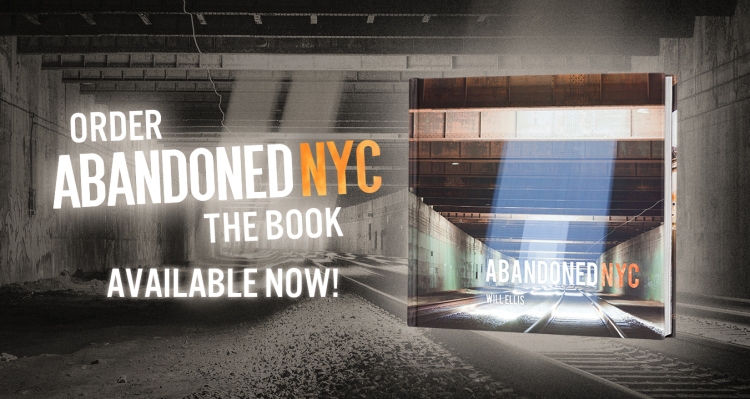If you’re like me, city living can wear you down—sooner or later, you’re itching for the woods again. The sleepy college town of New Paltz offers a cheap motel and a short proximity to Mohonk Preserve, 5,000 acres of hiking trails, swimming holes, and rock scrambles nestled deep in the ancient Palisades. The world-worn hills of the Shawangunk Ridge evoke a pleasing sense of permanence to the weary New Yorker, it’s a lifetime away from the teeming avenues of Manhattan. Time seems to stand still around here, but out in these tall timbers, the ruins of a 19th century ghost town hint at a lost way of life.
The area is known for its landmark luxury resort, the Mohonk Mountain House, which has been run by the same family since it opened in 1869. True to its Quaker roots, the hotel originally banned liquor, dancing, and card playing; until 2006, it couldn’t claim a bar, and you still won’t find a TV or radio in any of the $700 a night lodgings. It may sound old-fashioned, but it’s part of a tradition in these parts—since they were first settled in the late 1700s, things have always been behind the times.
Before the age of mountain tourism, a small subsistence community lived off this land, growing what little food the thin, rocky soil could support, raising a handful of livestock, drinking from the Coxing and Peter’s Kills. They scraped a living carving millstone out of native rock, shaving barrel hoops, and harvesting tree bark for leather tanning. In the summer, women and children joined in harvesting huckleberries, a seasonal cash crop in wild abundance at the time.
With a peak population of forty or fifty families, the settlement included a hotel, a store, a chapel, and a one room schoolhouse. Despite this progress, the population held to its old ways. So hopelessly and wonderfully at odds with the changing values of the outside world, this oldfangled hamlet didn’t stand a chance.
Starting in the late 1800s, advances in technology gradually replaced the small trades of the Trapps. Unable to sell their traditional wares, settlers found work in neighboring resorts, including the Mohonk Mountain House, building hotels and maintaining trails and carriage roads. In the late 20s, the construction of Route 44 created a short term boom in the town’s employment, but eventually led to its decline.
Many sold their property to resort owners and headed to nearby villages to find a better way of life, but one man called Eli Van Leuven stayed behind, living in a tiny plank house without running water or electricity until his death in 1956.
The Van Leuven Cabin has been lovingly restored, an unassuming monument to a largely forgotten community. Aside from this, the humble industries of the two score families that resided here have left little to mark them but shallow depressions in the ground, rubble stacked in odd arrangements, and leaf-littered tombstones. Only a settlement so bound to the earth could disappear so completely.
On the drive home, the first sighting of the Manhattan skyline elicits a kind of dull horror, signaling the inevitable return to a concrete-bound existence. As I’m plunged back into the 21st century, the scene is at once overstimulating and shockingly mundane. In that moment, I’d take an axe and a cool morning in a mountain hamlet over any day in the ad-plastered streets of midtown, but the daydreams invariably dissolve. Out of habit, obligation, or common sense, I’ll forget the plank house for the brownstone, the Coxing Kill for the coffee shop, as the stony ruins of a mountain town blanket themselves in moss.
-Will Ellis

Former site of the Enderly House, most structures incorporated Native American techniques into their construction.

This road was built in large part by Trapps Hamlet residents. Today, it glides through the heart of the ghost town.

This boundary wall was used to delineate the property of Benjamin Fowler, who owned 150 acres for farming, livestock, and family use.

Many of Benjamin’s young children are buried in this forest plot. This grave for his son William is the earliest, dating to 1866.














When I originally left a comment I seem to have clicked the -Notify me
when new comments are added- checkbox and now every time a
comment is added I receive 4 emails with the samke comment.
Perhaps there is a means you are able to remove
me from that service? Appreciate it!
LikeLike
Posted by hotels in redding california | 11-22-13., 5:57 amThat sounds annoying. There should be a link at the bottom of the email to unsubscribe.
LikeLike
Posted by Will Ellis | 11-22-13., 10:27 amThis old cemetery intrigued me, and I bought your book in hopes of going to this place myself. Disappointingly, this location is not in your book.
LikeLike
Posted by Erik | 7-21-16., 6:36 pmThe Quakers purchased the Mohonk Mt from Old man Stokes who was building it for his sons.
One day he got a letter telling him that both sons had died in the battle of Gettysburg. That did it for him and he sold to the Quakers. There’s much more to the story. A long history going back thousands of years
LikeLike
Posted by Michael Williams | 5-10-23., 7:31 pmBonticou Crag. From this point the The Esopus Indians met with the settlers and told them that they could have all the land that a man can go in a giant circle from this spot in 1 day. The settlers picked their fastest and long distance runner. He ran first to Danskammer ( Old dutch for devils dance chamber.) A natural amphitheater on the Hudson river where the Indians went to party and sing and dance. The sounds could be heard far up and down the river.Needless to say he ran all day and night and that is how the ulster county boundaries were drawn up. Tuns of history in the area.
LikeLike
Posted by Michael Williams | 5-10-23., 7:55 pm